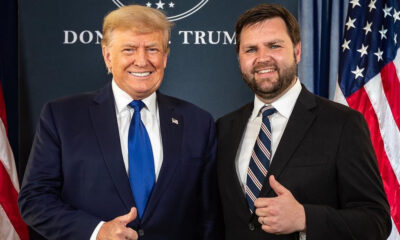Reviews
Backtesting Futures Trading Strategies: Lessons Learned from Historical Data

In futures trading, backtesting is essential for evaluating a trading strategy’s potential using historical data. It helps traders assess their strategies before investing in real capital. By simulating trades with past market data, traders can identify strengths and weaknesses, refine their approaches, and improve their chances of success in dynamic futures markets. Let’s take a closer look at the key lessons learned from backtesting futures trading strategies.
What is Backtesting?
Backtesting involves simulating trades using historical market data, allowing traders to evaluate their strategies without risking real capital. By analyzing past price movements and testing various parameters, traders can identify potential entry and exit points, risk management techniques, and other important factors that can impact the success of a trading strategy. This process enables traders to assess the viability of a strategy in different market conditions and make necessary adjustments before implementing it live.
The Importance of Historical Data
Historical data is the backbone of backtesting futures trading strategies. It enables traders to recreate past market conditions and see how their strategies would have performed. The quality and scope of the data used are crucial; accurate and comprehensive datasets ensure more reliable backtesting results.
By delving into historical data, traders can analyze how their futures trading strategies respond to various market scenarios, identifying patterns and potential pitfalls. This in-depth analysis helps in understanding how strategies might behave under different volatility levels, market trends, and economic events, thus providing valuable insights for refining trading approaches.
Key Lessons Learned from Backtesting
1. Understand the Importance of Risk Management
One of the most significant lessons learned from backtesting is the importance of risk management. While it may seem tempting to chase high-risk, high-reward trades, a solid risk management strategy can protect traders from catastrophic losses in the long run. Backtesting allows traders to test different risk management techniques and determine which ones work best for their trading style and risk tolerance.
2. Determine Optimal Entry and Exit Points
Backtesting also helps traders identify optimal entry and exit points for their futures trading strategies. By analyzing historical market data, traders can pinpoint patterns and trends that would have resulted in profitable trades. This knowledge can then be applied to future trades, increasing the likelihood of success.
3. Adapt to Changing Market Conditions
Another crucial lesson learned from backtesting is the need to adapt to changing market conditions. Market trends and volatility levels can fluctuate significantly, and traders need to be able to adjust their strategies accordingly. By backtesting, traders can see how their strategies perform in various market scenarios and make necessary adjustments to improve overall performance.
4. Importance of Discipline and Consistency
Backtesting also highlights the importance of discipline and consistency in trading. It allows traders to stick to a predetermined set of rules without getting swayed by emotions or external factors. By adhering to a well-defined strategy consistently, traders can reduce the impact of impulsive decisions and maintain a disciplined approach towards trading.
5. Leverage Technology for Efficient Trading
The advancements in technology have made backtesting more accessible and efficient than ever before. With the help of various trading platforms, traders can automate their backtesting process, saving time and effort while also gaining valuable insights into their strategies’ performance.
Additionally, technology has enabled traders to access a vast amount of historical market data, allowing for more accurate and comprehensive backtesting results. As a result, traders can make informed decisions based on data-driven analysis rather than guesswork or intuition.
6. Continuous Learning and Improvement
Backtesting is not a one-time activity but a continuous process. Traders should regularly backtest their strategies to identify areas for improvement and adapt to changing market conditions. By constantly evaluating and analyzing past trades, traders can learn from their mistakes, refine their strategies, and continuously improve their trading performance.
Conclusion
In conclusion, backtesting is an essential tool for every trader looking to build a successful career in the financial markets. It allows traders to gain valuable insights into the effectiveness of their strategies, adapt to changing market conditions, maintain discipline, and make informed decisions based on data-driven analysis. By incorporating backtesting into their trading routine, traders can increase their chances of success and achieve their financial goals in the long run.

-

 World3 days ago
World3 days agoEthiopian volcano erupts for first time in thousands of years
-

 Legal1 week ago
Legal1 week agoMichigan man JD Vance sentenced to 2 years for threatening Trump and JD Vance
-

 Legal1 week ago
Legal1 week agoWoman in critical condition after being set on fire on Chicago train
-

 World1 week ago
World1 week agoHurricane Melissa registered 252 mph wind gust, breaking global record
-

 Legal6 days ago
Legal6 days agoSuspect in San Diego stabbing shot by authorities after fleeing into Mexico
-

 Legal1 week ago
Legal1 week ago1 dead, 2 injured in shooting at Dallas Walmart parking lot
-

 Health6 days ago
Health6 days agoMarburg virus outbreak in Ethiopia grows to 6 confirmed cases
-

 Legal5 hours ago
Legal5 hours agoUtah Amber Alert: Jessika Francisco abducted by sex offender in Ogden




